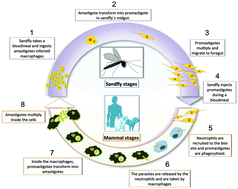New approaches from nanomedicine for treating leishmaniasis
Abstract
Leishmaniasis, a vector-borne disease caused by obligate intramacrophage protozoa, threatens 350 million people in 98 countries around the world. There are already 12 million infected people worldwide and two million new cases occur annually. Leishmaniasis has three main clinical presentations: cutaneous (CL), mucosal (ML), and visceral (VL). It is considered an opportunistic, infectious disease and the HIV-leishmaniasis correlation is well known. Antimonial compounds are used as first-line treatment drugs, but their toxicity, which can be extremely high, leads to a number of undesirable side effects and resultant failure of the patients to adhere to treatment. There is also a reported increase in Leishmania sp. resistance to these drugs. Nanotechnology has emerged as an attractive alternative because of its improved bioavailability and lower toxicity, and other characteristics that help to relieve the burden of this disease. In this review we will present some of the recent advances in the nanotechnological research regarding the treatment of leishmaniasis. The preclinical results regarding the approaches for a biomedical treatment of the disease have been encouraging, but further efforts will still be necessary for this therapy to have greater clinical applicability in humans.


 Please wait while we load your content...
Please wait while we load your content...